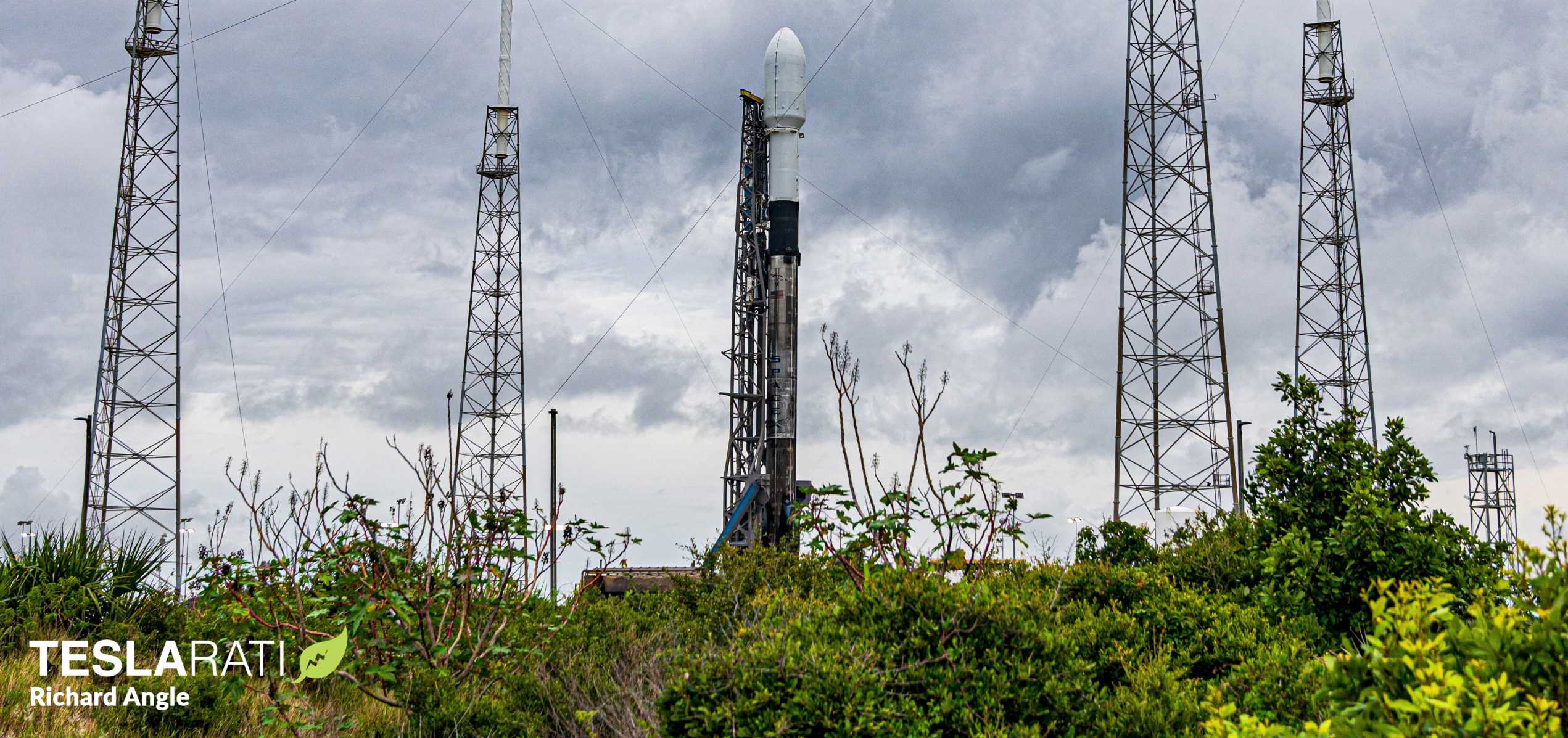

News
SpaceX’s ninth Starlink launch gets a boost from first all-women weather crew
SpaceX’s second Starlink launch of the month is currently tracking towards a June 13th liftoff from Cape Canaveral, Florida.
In order for a rocket launch to get off the ground, however, a perfect mix of ingredients must come together. One of the most crucial ingredients is the weather. Behind the scenes, the U.S. Space Force’s 45th Weather Squadron of the 45th Space Wing Operations Group – based out of Patrick Air Force Base – works diligently to monitor and predict weather conditions leading up to and at the time of liftoff. Every rocket launch that lifts off from Kennedy Space Center or Cape Canaveral Air Force Station utilizes the weather monitoring services provided by the 45th Weather Squadron and SpaceX – the most prolific US launch company is – no different.
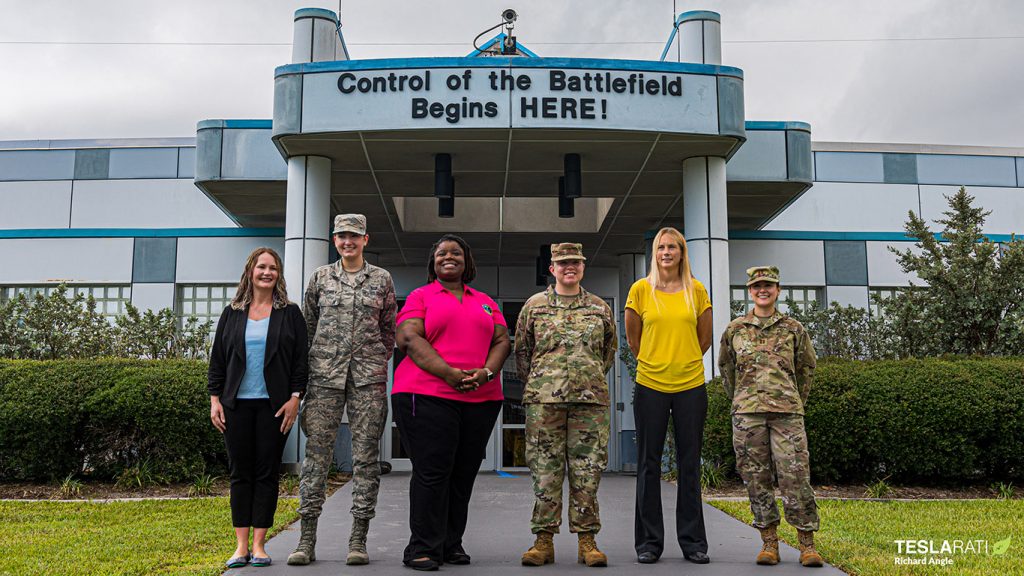
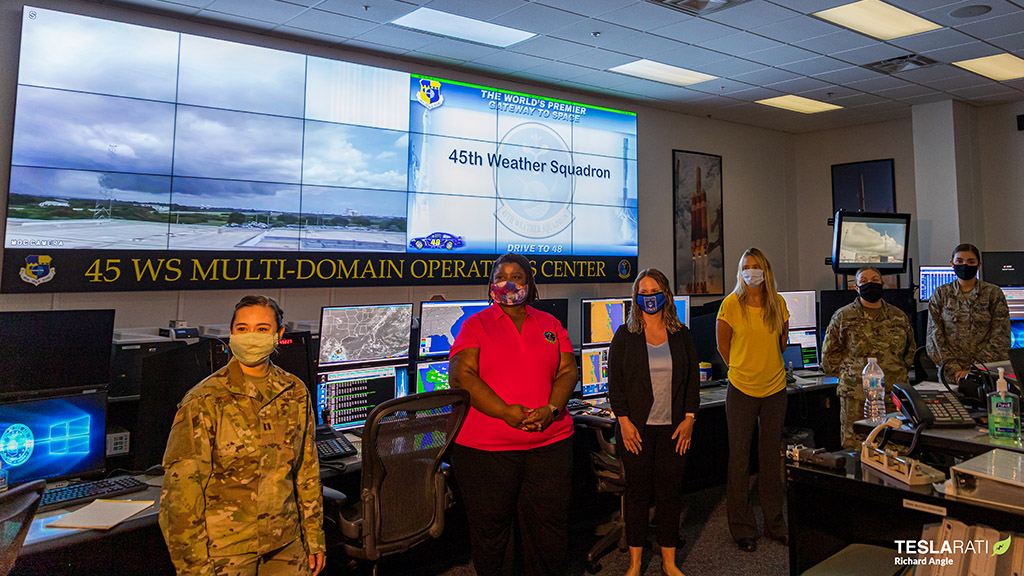
For SpaceX’s upcoming Starlink V1 L8 Rideshare Program mission, the entire weather team on console is female, a first in program history. The team is made up of six women all responsible for specific roles that must coordinate and work cohesively to monitor the weather and determine when it is safe to launch the Falcon 9.
The diverse team is comprised of military personnel and civilian weather officers. It is overseen by Maj Emily Graves, Launch Weather Commander, and orchestrated by Capt. Nancy Zimmerman, Launch Weather Director. A Lead Launch Weather Officer, Arlena Moses, coordinates information between the launch customer, SpaceX, and the 45th while three other members constantly monitor and decipher mountains of weather data.
Airman 1st class Hannah Mulcahey serves as Duty Forecaster and Jessica Williams serves as Radar Launch Weather Officer. Williams is responsible for monitoring information produced by a series of systems every three minutes. She monitors radar data for the amount of precipitation, clouds that are present in the area, and the thickness of the clouds among other things. This information is used to determine whether or not the rocket’s flight path is safe for the duration of the mission. Thick clouds can be an indicator of an unstable atmosphere capable of producing electricity – either naturally as cloud produced lightning or lightning produced by a rocket thrusting through the unstable atmosphere called triggered lightning.
Should radar information be too ambiguous or overexaggerated, the Reconnaissance Launch Weather Officer, Melody Lovin, coordinates the mission with a reconnaissance aircraft known as Weather One. For SpaceX’s upcoming launch, Weather One will only be activated if there is going to be bad weather present for launch, a small possibility if the launch date slips. Other launch customers such as NASA or United Launch Alliance will sometimes have Weather One in the air on standby throughout the duration of the countdown to launch dependent on mission constraints.
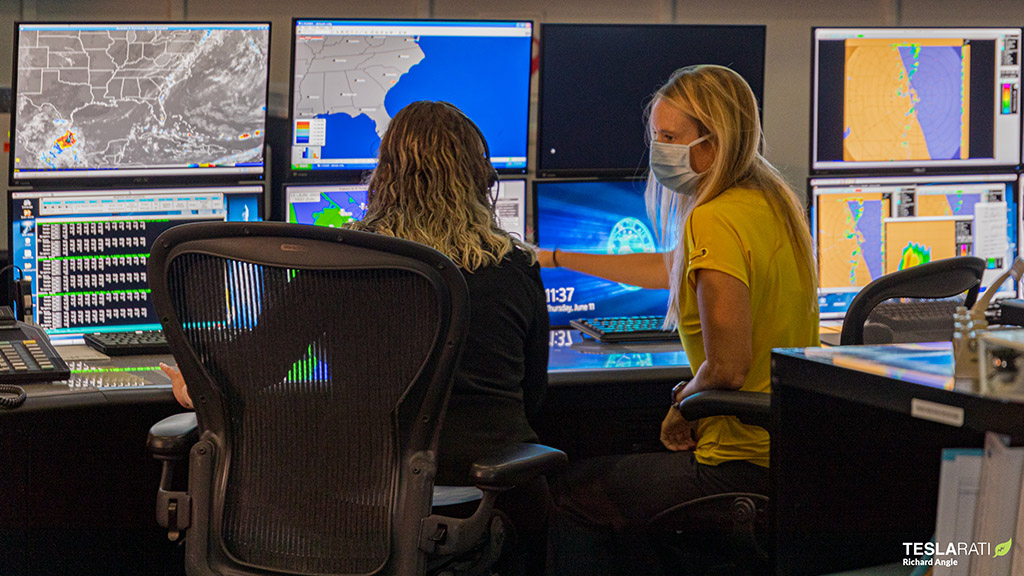
When Launch Weather Director, Capt Nancy Zimmerman, was asked during a media teleconference about how this historical assignment came about, she stated that it was pure coincidence. “It was happenstance. The flight commander of space lift, my supervisor, actually created a team, as he always does, and was like ‘Huh, this is actually an all-female team. Have we ever done this?’ And looking back through the database, you know, it hasn’t been done and he was like ‘Well, should we do this?’ and I said ‘Yes, let’s do it.’” Zimmerman said .
A primary factor enabling an all-female led launch weather team is simply that the workforce of the 45th Weather Squadron is now comprised of more females than ever before. According to Lovin, “We simply have more women on the team. Before we only had one and that was from the year 2000 to 2018 and 2018 came around and a lot of resident launch weather officers left and they also decided to expand the unit.” She went on to state that the massive uptick in launches from the Cape Canaveral Air Force Station and Kennedy Space Center was a driving factor of the weather unit expansion, “when they expanded the unit they hired three more women, so that means we have six women on the team.”
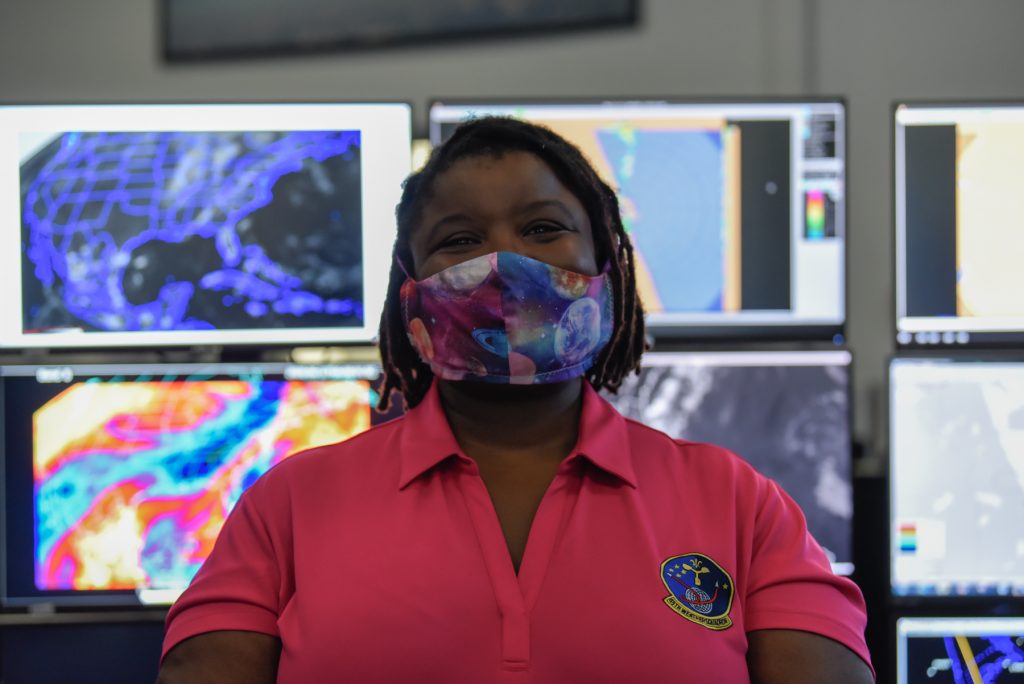
The personnel of the 45th Weather Squadron work day in and day out to monitor and forecast weather conditions ensuring safe air and space operation all year round. When it comes to rocket launches, watching the weather begins early and is done frequently. Weather patterns in central Florida can change rapidly causing a rocket launch attempt to be scrubbed completely, which is what occurred with SpaceX’s first attempt to launch NASA astronauts Bob Behnken and Doug Hurley to the International Space Station.

Understanding and tracking developing weather patterns of central Florida allows the 45th Weather Squadron to create launch mission execution forecasts that outline a possibility of violation (POV) of specific launch weather constraints ahead of a launch attempt and any planned backup attempts. These comprehensive forecasts cover everything from systems like frontal boundaries that influence area weather to the type of clouds expected at the time of launch. The forecasts are put together based on a series of ten Lightning Launch Commit Criteria rules and a series of user-defined constraint rules that are specific to each mission and launch vehicle such as SpaceX’s Falcon 9 or United Launch Alliance’s Atlas V for example.
The ten lightning launch commit criteria rules have been in place since the 1980s when an Atlas-Centaur rocket was ultimately lost due to triggered lightning. The rocket launched into a highly unstable and electrified atmosphere full of thick clouds creating the conditions necessary to trigger a lightning strike of the vehicle. It lost its navigation system and began to dangerously veer from its course. It was then destroyed in-flight by launch teams.
Given the high degree of uncertainty of Florida weather, a well-versed team of highly trained weather professionals is a necessary piece of the puzzle that is rocket launching. For the first time, that team is made up of incredibly inspiring females that undoubtedly will make the correct GO/NO GO call on launch day.
For SpaceX’s first Starlink SmallSat Rideshare Program mission, targeted to launch no earlier than (NET) Saturday, June 13 at 5:21 a.m. EDT (09:21 UTC), the 45th Weather Squadron team predicts a 30% chance of violation – meaning that weather is 70% GO for launch. The primary concern is a bank of cumulus clouds expected to be in the area. You can view the full launch mission execution forecast on the 45th Weather Squadron’s website.
Check out Teslarati’s newsletters for prompt updates, on-the-ground perspectives, and unique glimpses of SpaceX’s rocket launch and recovery processes.
News
These Tesla, X, and xAI engineers were just poached by OpenAI
The news is the latest in an ongoing feud between Elon Musk and the Sam Altman-run firm OpenAI.

OpenAI, the xAI competitor for which Elon Musk previously served as a boardmember and helped to co-found, has reportedly poached high-level engineers from Tesla, along with others from xAI, X, and still others.
On Tuesday, Wired reported that OpenAI hired four high-level engineers from Tesla, xAI, and X, as seen in an internal Slack message sent by co-founder Greg Brockman. The engineers include Tesla Vice President of Software Engineering David Lau, X and xAI’s head of infrastructure engineering Uday Ruddarraju, and fellow xAI infrastructure engineer Mike Dalton. The hiring spree also included Angela Fan, an AI researcher from Meta.
“We’re excited to welcome these new members to our scaling team,” said Hannah Wong, an OpenAI spokesperson. “Our approach is to continue building and bringing together world-class infrastructure, research, and product teams to accelerate our mission and deliver the benefits of AI to hundreds of millions of people.”
Lau has been in his position as Tesla’s VP of Software Engineering since 2017, after previously working for the company’s firmware, platforms, and system integration divisions.
“It has become incredibly clear to me that accelerating progress towards safe, well-aligned artificial general intelligence is the most rewarding mission I could imagine for the next chapter of my career,” Lau said in a statement to Wired.
🚨Optimistic projections point to xAI possibly attaining profitability by 2027, according to Bloomberg's sources.
If accurate, this would be quite a feat for xAI. OpenAI, its biggest rival, is still looking at 2029 as the year it could become cash flow positive.💰 https://t.co/pE5Z9daez8
— TESLARATI (@Teslarati) June 18, 2025
READ MORE ON OPENAI: Elon Musk’s OpenAI lawsuit clears hurdle as trial looms
At xAI, Ruddarraju and Dalton both played a large role in developing the Colossus supercomputer, which is comprised of over 200,000 GPUs. One of the major ongoing projects at OpenAI is the company’s Stargate program,
“Infrastructure is where research meets reality, and OpenAI has already demonstrated this successfully,” Ruddarraju told Wired in another statement. “Stargate, in particular, is an infrastructure moonshot that perfectly matches the ambitious, systems-level challenges I love taking on.”
Elon Musk is currently in the process of suing OpenAI for shifting toward a for-profit model, as well as for accepting an investment of billions of dollars from Microsoft. OpenAI retaliated with a counterlawsuit, in which it alleges that Musk is interfering with the company’s business and engaging in unfair competition practices.
Elon Musk confirms Grok 4 launch on July 9 with livestream event
News
SpaceX share sale expected to back $400 billion valuation
The new SpaceX valuation would represent yet another record-high as far as privately-held companies in the U.S. go.

A new report this week suggests that Elon Musk-led rocket company SpaceX is considering an insider share sale that would value the company at $400 billion.
SpaceX is set to launch a primary fundraising round and sell a small number of new shares to investors, according to the report from Bloomberg, which cited people familiar with the matter who asked to remain anonymous due to the information not yet being public. Additionally, the company would sell shares from employees and early investors in a follow-up round, while the primary round would determine the price for the secondary round.
The valuation would represent the largest in history from a privately-owned company in the U.S., surpassing SpaceX’s previous record of $350 billion after a share buyback in December. Rivaling company valuations include ByteDance, the parent company of TikTok, as well as OpenAI.
Bloomberg went on to say that a SpaceX representative didn’t respond to a request for comment at the time of publishing. The publication also notes that the details of such a deal could still change, especially depending on interest from the insider sellers and share buyers.
Axiom’s Ax-4 astronauts arriving to the ISS! https://t.co/WQtTODaYfj
— TESLARATI (@Teslarati) June 26, 2025
READ MORE ON SPACEX: SpaceX to decommission Dragon spacecraft in response to Pres. Trump war of words with Elon Musk
SpaceX’s valuation comes from a few different key factors, especially including the continued expansion of the company’s Starlink satellite internet company. According to the report, Starlink accounts for over half of the company’s yearly revenue. Meanwhile, the company produced its 10 millionth Starlink kit last month.
The company also continues to develop its Starship reusable rocket program, despite the company experiencing an explosion of the rocket on the test stand in Texas last month.
The company has also launched payloads for a number of companies and government contracts. In recent weeks, SpaceX launched Axiom’s Ax-4 mission, sending four astronauts to the International Space Station (ISS) for a 14-day stay to work on around 60 scientific experiments. The mission was launched using the SpaceX Falcon 9 rocket and a new Crew Dragon capsule, while the research is expected to span a range of fields including biology, material and physical sciences, and demonstrations of specialized technology.
News
Tesla Giga Texas continues to pile up with Cybercab castings
Tesla sure is gathering a lot of Cybercab components around the Giga Texas complex.

Tesla may be extremely tight-lipped about the new affordable models that it was expected to start producing in the first half of the year, but the company sure is gathering a lot of Cybercab castings around the Giga Texas complex. This is, at least, as per recent images taken of the facility.
Cybercab castings galore
As per longtime drone operator Joe Tegtmeyer, who has been chronicling the developments around the Giga Texas complex for several years now, the electric vehicle maker seems to be gathering hundreds of Cybercab castings around the factory.
Based on observations from industry watchers, the drone operator appears to have captured images of about 180 front and 180 rear Cybercab castings in his recent photos.
Considering the number of castings that were spotted around Giga Texas, it would appear that Tesla may indeed be preparing for the vehicle’s start of trial production sometime later this year. Interestingly enough, large numbers of Cybercab castings have been spotted around the Giga Texas complex in the past few months.
Cybercab production
The Cybercab is expected to be Tesla’s first vehicle that will adopt the company’s “unboxed” process. As per Tesla’s previous update letters, volume production of the Cybercab should start in 2026. So far, prototypes of the Cybercab have been spotted testing around Giga Texas, and expectations are high that the vehicle’s initial trial production should start this year.
With the start of Tesla’s dedicated Robotaxi service around Austin, it might only be a matter of time before the Cybercab starts being tested on public roads as well. When this happens, it would be very difficult to deny the fact that Tesla really does have a safe, working autonomous driving system, and it has the perfect vehicle for it, too.
-

 Elon Musk1 week ago
Elon Musk1 week agoTesla investors will be shocked by Jim Cramer’s latest assessment
-

 News2 weeks ago
News2 weeks agoTesla Robotaxi’s biggest challenge seems to be this one thing
-

 Elon Musk1 day ago
Elon Musk1 day agoElon Musk confirms Grok 4 launch on July 9 with livestream event
-

 News2 weeks ago
News2 weeks agoWatch the first true Tesla Robotaxi intervention by safety monitor
-

 News5 days ago
News5 days agoTesla Model 3 ranks as the safest new car in Europe for 2025, per Euro NCAP tests
-

 Elon Musk2 weeks ago
Elon Musk2 weeks agoA Tesla just delivered itself to a customer autonomously, Elon Musk confirms
-

 Elon Musk2 weeks ago
Elon Musk2 weeks agoxAI welcomes Memphis pollution results, environmental groups push back
-

 Elon Musk2 weeks ago
Elon Musk2 weeks agoElon Musk confirms Tesla Optimus V3 already uses Grok voice AI



















